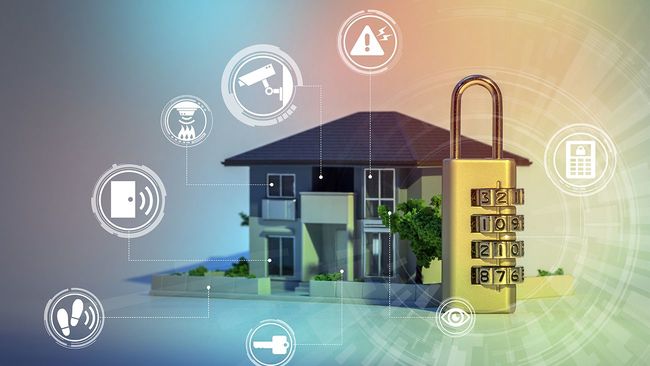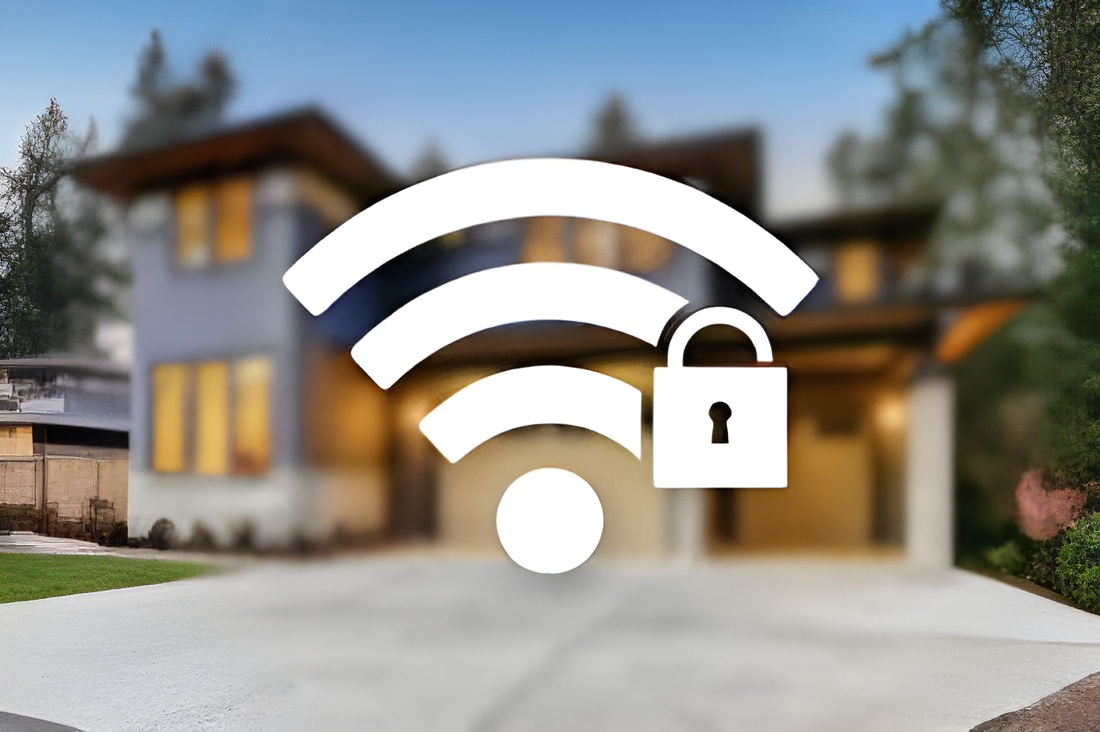
Home Safety: Essential Tips to Secure Your Home
Home safety is an essential aspect of living that cannot be overlooked. With the ever-evolving nature of security threats, ensuring the safety of your home requires a proactive approach. From preventing break-ins to reducing the risk of accidents, enhancing home safety involves a comprehensive strategy that includes both modern technology and common-sense practices. This guide delves into detailed, practical tips to improve home safety, ensuring your peace of mind.
Understanding the Importance of Home Safety
Your home is your sanctuary, a place where you should feel safe and secure. However, statistics show that many homes are vulnerable to various threats, including burglaries, fires, and accidents. According to the FBI, a burglary occurs every 26 seconds in the United States, and home fires account for thousands of deaths each year. These numbers highlight the need for homeowners to take deliberate actions to secure their homes.
Assessing Your Home’s Security Needs
Before diving into specific tips, it’s essential to assess your home’s current security status. This involves identifying potential vulnerabilities and understanding the unique risks your home may face based on its location, design, and your lifestyle.
Location: Homes in urban areas may face different security challenges compared to rural homes. Consider the crime rate in your neighborhood and any recent incidents that may indicate a trend.
Design: The design of your home, including the number of entry points and the visibility of your property, plays a significant role in its security. Homes with multiple entrances or secluded areas may require additional security measures.
Lifestyle: Your lifestyle, such as frequent travel or long work hours, can impact your home’s security needs. If you’re often away from home, investing in a robust security system may be necessary.
Tip 1: Invest in a Comprehensive Home Security System

One of the most effective ways to secure your home is by installing a comprehensive home security system. Modern security systems offer a range of features that can be tailored to your specific needs.
Smart Security Cameras: Install cameras at all entry points and around the perimeter of your home. Choose cameras with motion detection, night vision, and cloud storage capabilities for continuous monitoring.
Alarm Systems: An alarm system with sensors on doors and windows can alert you to any unauthorized entry. Many modern systems can be connected to your smartphone, allowing you to monitor your home remotely.
Smart Locks: Replace traditional locks with smart locks that can be controlled via your smartphone. Some smart locks also offer keyless entry options, reducing the risk of lost keys.
Tip 2: Strengthen Doors and Windows
Doors and windows are the most common entry points for burglars. Reinforcing these areas can significantly enhance your home’s security.
Solid Core Doors: Ensure that all exterior doors are made of solid materials, such as steel or solid wood, which are more resistant to forced entry.
Deadbolt Locks: Install deadbolt locks on all exterior doors. Deadbolts provide an additional layer of security that is difficult to bypass.
Reinforced Door Frames: Strengthen door frames with metal plates or heavy-duty screws to prevent them from being kicked in.
Window Locks and Bars: Install locks on all windows and consider adding security bars to windows that are easily accessible.
Tip 3: Improve Outdoor Lighting

Outdoor lighting is a simple yet effective deterrent against criminal activity. Well-lit exteriors make it difficult for potential intruders to approach your home without being seen.
Motion-Activated Lights: Install motion-activated lights around the perimeter of your home, particularly near entry points. These lights will turn on automatically when movement is detected, startling potential intruders.
Pathway Lighting: Illuminate pathways, driveways, and entrances with low-voltage lighting. This not only enhances security but also adds to the aesthetic appeal of your home.
Timer-Controlled Lights: Use timer-controlled lights to give the appearance that someone is home, even when you’re away. This can deter burglars who target unoccupied homes.
Tip 4: Secure Your Wi-Fi Network

In today’s digital age, securing your Wi-Fi network is as important as securing your physical home. A compromised Wi-Fi network can give hackers access to your personal information and smart home devices.
Strong Passwords: Use strong, unique passwords for your Wi-Fi network and change them regularly. Avoid using easily guessable information, such as your name or address.
Network Encryption: Enable WPA3 encryption on your router to protect your network from unauthorized access. WPA3 is the latest and most secure encryption standard available.
Guest Networks: Set up a separate guest network for visitors to prevent them from accessing your primary network and connected devices.
Tip 5: Practice Fire Safety
Fires pose a significant risk to home safety, often resulting in devastating consequences. Implementing fire safety measures can protect your home and loved ones.
Smoke Alarms: Install smoke alarms on every level of your home, particularly near sleeping areas. Test the alarms monthly and replace batteries at least once a year.
Fire Extinguishers: Keep fire extinguishers in key areas of your home, such as the kitchen, garage, and near fireplaces. Ensure that all household members know how to use them.
Escape Plan: Develop a fire escape plan with at least two exit routes from every room. Practice the plan regularly with your family, especially children.
Tip 6: Childproof Your Home
If you have young children, childproofing your home is essential to prevent accidents and injuries.
Safety Gates: Install safety gates at the top and bottom of stairs to prevent falls. Use gates that are securely mounted and difficult for children to open.
Outlet Covers: Cover all electrical outlets with childproof covers to prevent electrical shocks.
Cabinet Locks: Install locks on cabinets that contain hazardous materials, such as cleaning supplies, medications, and sharp objects.
Tip 7: Install Carbon Monoxide Detectors
Carbon monoxide (CO) is a colorless, odorless gas that can be deadly if undetected. Installing CO detectors can save lives by providing early warnings of dangerous levels.
Placement: Install CO detectors on every level of your home, particularly near bedrooms and fuel-burning appliances.
Regular Testing: Test CO detectors monthly and replace batteries at least once a year. Replace the detectors themselves every 5-7 years, depending on the manufacturer’s recommendations.
Tip 8: Secure Your Home’s Perimeter

The perimeter of your property is the first line of defense against intruders. Securing it can prevent unauthorized access and deter criminal activity.
Fencing: Install a sturdy fence around your property. Choose a fence height and design that discourages climbing or tampering.
Gates and Locks: Ensure that all gates are securely locked and in good repair. Consider installing electronic gate locks for added security.
Landscaping: Keep bushes and trees trimmed to eliminate hiding spots for potential intruders. Avoid planting tall shrubs near windows or entry points.
Tip 9: Monitor Your Home’s Security
Regular monitoring and maintenance of your home’s security measures are crucial to ensuring their effectiveness.
Routine Inspections: Conduct regular inspections of your security systems, including cameras, alarms, and locks, to ensure they are functioning correctly.
Professional Monitoring Services: Consider subscribing to a professional monitoring service that can alert authorities in the event of a security breach.
Update Technology: Stay informed about the latest advancements in home security technology and upgrade your systems as needed.
Tip 10: Protect Valuables
In addition to securing your home, it’s essential to protect your valuables from theft or damage.
Safes: Invest in a high-quality safe to store valuable items such as jewelry, important documents, and cash. Ensure the safe is fireproof and securely anchored.
Inventory: Keep an up-to-date inventory of your valuable items, including photographs, serial numbers, and appraisals. This information can be invaluable in the event of theft or damage.
Tip 11: Use Smart Home Devices
Smart home devices offer convenience and enhanced security by allowing you to control various aspects of your home remotely.
Smart Doorbells: Install a smart doorbell with a built-in camera to monitor who is at your door, even when you’re not home.
Smart Thermostats: Use a smart thermostat to control your home’s temperature and reduce the risk of fires caused by overheating.
Smart Plugs: Use smart plugs to remotely control appliances and electronics, reducing the risk of electrical fires.
Tip 12: Stay Informed and Prepared
Staying informed about potential threats and being prepared for emergencies can significantly improve your home’s safety.
Emergency Contacts: Keep a list of emergency contacts, including local police, fire departments, and nearby neighbors, easily accessible.
Community Programs: Participate in neighborhood watch programs or other community safety initiatives to stay informed about local security issues.
First Aid Kit: Keep a well-stocked first aid kit in your home and ensure all household members know how to use it.
Conclusion
Improving home safety is a continuous process that requires attention to detail and a proactive approach. By implementing these tips, you can create a safer environment for yourself and your loved ones. Remember, the key to effective home security is regular assessment and adaptation to new threats and technologies. Stay vigilant, stay informed, and your home will remain a secure haven.
Final Thoughts
Home safety is not a one-size-fits-all approach. Each home is unique, and your safety measures should reflect the specific needs and challenges of your living situation. Whether you live in a bustling city or a quiet suburb, taking the time to assess your home’s vulnerabilities and addressing them with the latest security measures will pay off in the long run.
Keep in mind that while technology plays a significant role in modern home security, simple, everyday practices can also make a big difference. Locking doors and windows, being mindful of who you let into your home, and maintaining good relationships with neighbors are all part of creating a safe home environment.
With the right combination of tools, technology, and awareness, you can protect your home and enjoy peace of mind knowing that you’ve done everything possible to keep your loved ones safe.


